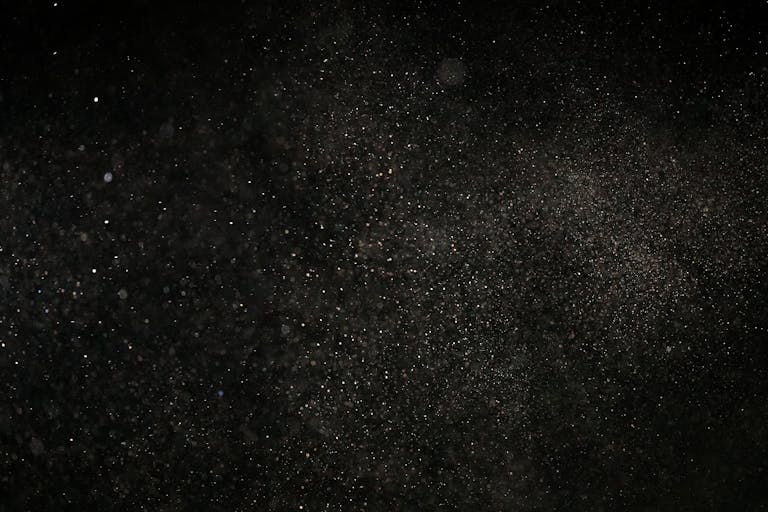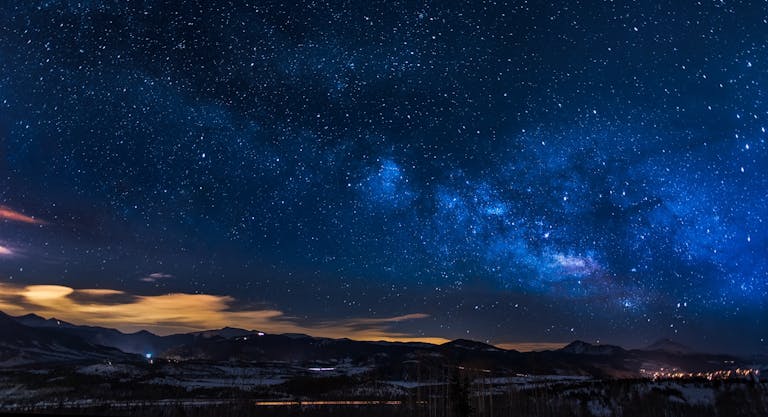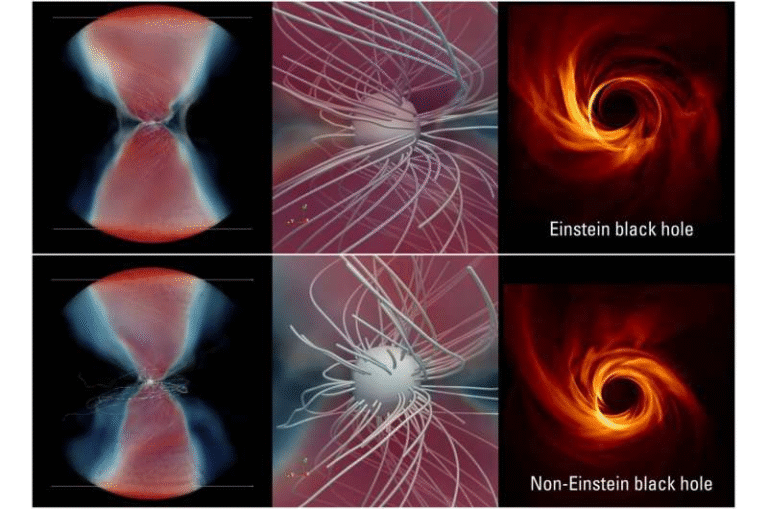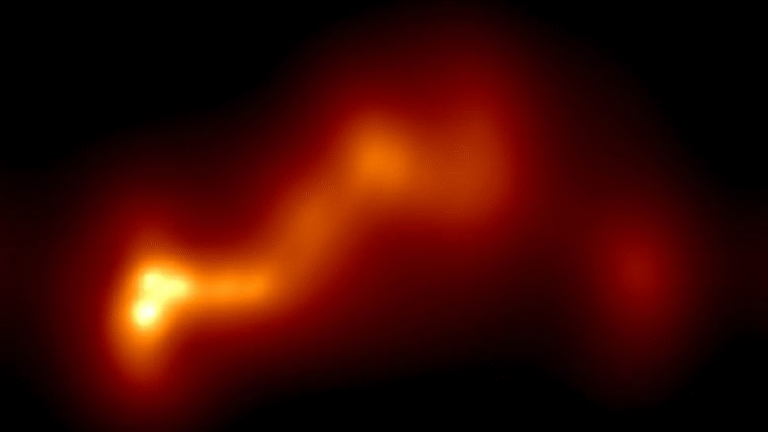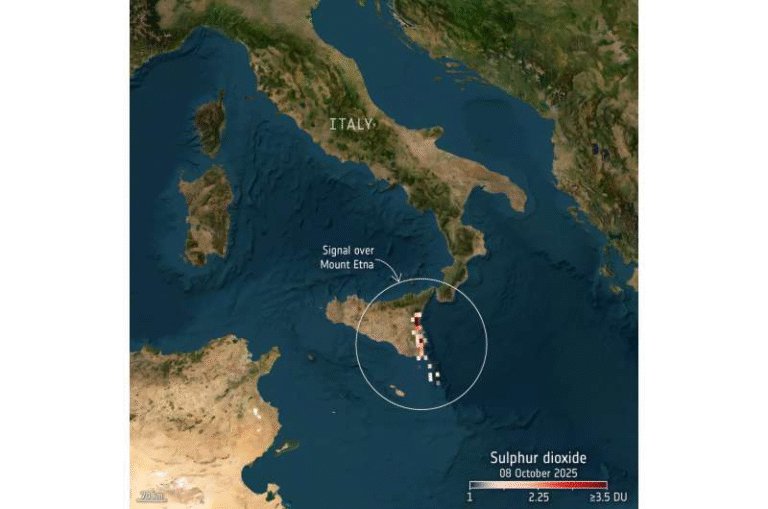Hubble Reveals a Warped Spiral Galaxy Bursting With Young Stars
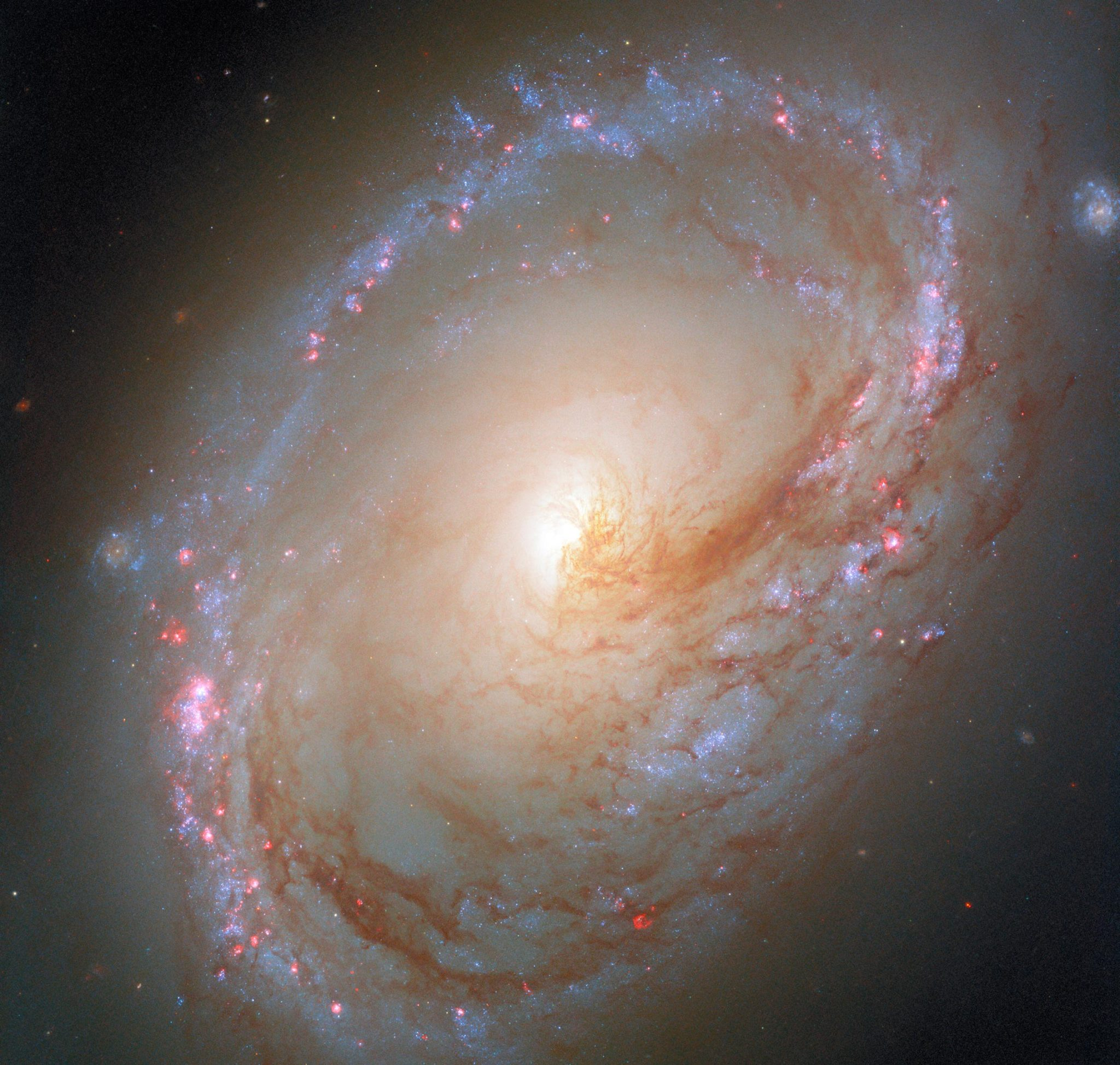
The Hubble Space Telescope has once again turned its gaze toward Messier 96 (M96), a spiral galaxy located about 35 million light-years away in the constellation Leo. The new image, released by NASA and ESA, provides astronomers with a sharper and more detailed look at the galaxy’s structure, composition, and star-forming activity.
This fresh portrait is not just a pretty picture—it contains valuable scientific information. Using both ultraviolet and optical light, along with filters that detect ionized hydrogen (H-alpha) and ionized nitrogen (N II), astronomers have highlighted regions where new stars are actively forming. The result is a spectacular image showing glowing pink gas clouds wrapped around clusters of massive, young stars.
The Distorted Beauty of Messier 96
Unlike the more symmetric spiral galaxies people are used to seeing, M96 has a lopsided and warped appearance. Its spiral arms are uneven, the distribution of gas and dust is scattered, and even its core is slightly displaced from the geometric center. These irregularities make it stand out among nearby galaxies.
Astronomers attribute this unusual structure to gravitational interactions. M96 belongs to the M96 Group, a collection of galaxies including M95, M105, and several smaller companions. The gravitational tug-of-war between these neighboring galaxies has likely distorted M96’s shape, scattering clouds of gas and dust while displacing its core.
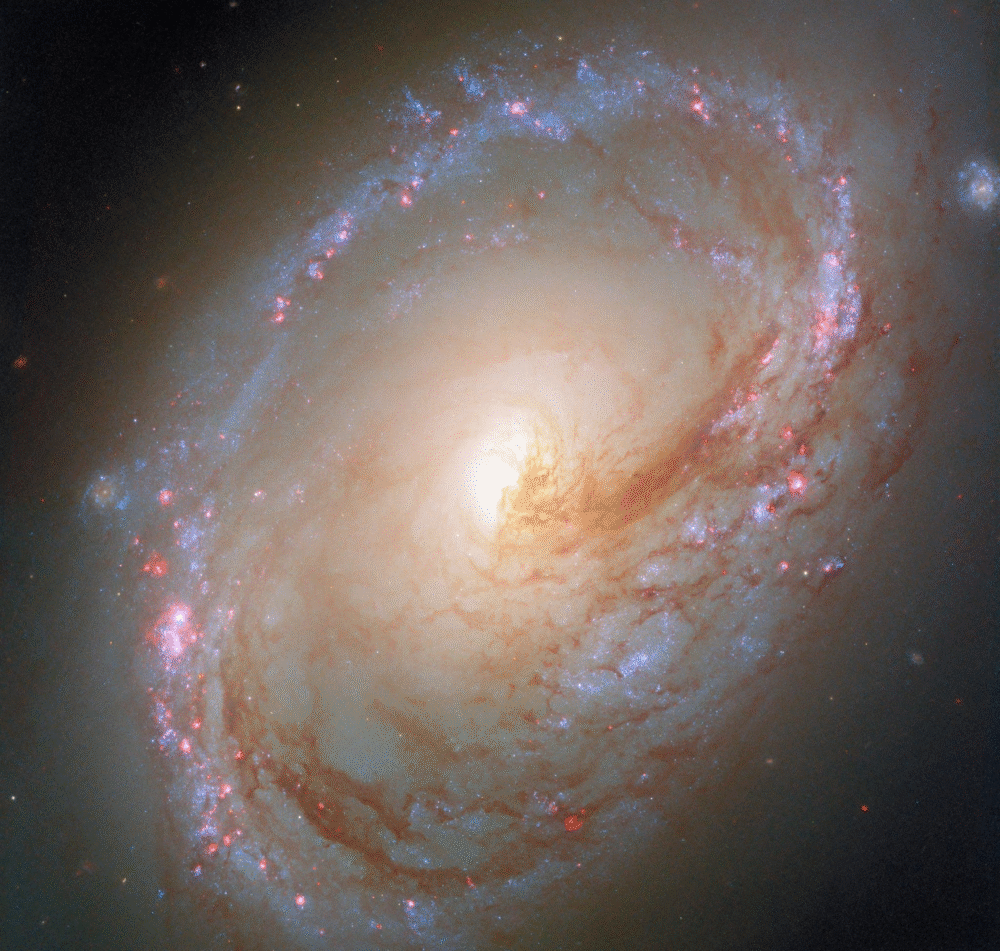
These kinds of interactions are common in galaxy groups. Tidal forces caused by close encounters can warp spiral arms, trigger bursts of star formation, and reshape galaxies over millions of years. M96 provides an excellent case study for understanding how galaxies evolve through these cosmic struggles.
What Hubble’s New Image Shows
The latest Hubble observation of M96 adds to two earlier releases (in 2015 and 2018), but this time, astronomers used additional filters to reveal more about the galaxy’s stellar nurseries.
- Ultraviolet light highlights the hottest, youngest stars.
- Optical filters capture the broader view of the galaxy’s spiral structure.
- H-alpha and N II filters reveal glowing regions of ionized gas where new stars are forming.
In this image, astronomers observed bright pink clouds that encircle massive clusters of hot, young stars. These are regions where stars are still embedded in their natal gas clouds, giving scientists a direct look at the star formation process.
The presence of these glowing rings suggests that star formation in M96 is concentrated in its outer regions, where the gas is abundant and still collapsing under gravity to form new stars. This is particularly interesting because many galaxies show star formation near their centers, while M96’s outer disk is the main hub of activity.
Why These Observations Matter
Studying galaxies like M96 helps astronomers answer some fundamental questions:
- How do stars form out of dense gas clouds?
By observing stars still surrounded by their birth clouds, scientists can learn how gas collapses and fragments into star clusters. - How does dust affect the light we see?
Dust grains scatter and absorb light, making young stars appear dimmer or redder. The Hubble data helps quantify how dust alters our view. - How do stars reshape their environment?
Young, massive stars emit strong winds and radiation that push surrounding gas outward. This feedback can either trigger more star formation or halt it by dispersing gas.
With the new data, astronomers can piece together a clearer picture of how galaxies evolve, particularly in group environments where gravitational interactions drive change.
Messier 96 in the Bigger Picture
Messier 96 isn’t just another spiral galaxy—it’s the brightest member of its group, making it a prime subject for observation. Its distorted structure makes it a natural laboratory for studying how galaxies behave when influenced by their neighbors.
For astronomers, it also highlights the importance of galaxy groups in the larger cosmic web. While clusters of hundreds or thousands of galaxies are often studied, small groups like the M96 Group are much more common in the universe. Understanding how galaxies interact in these settings provides insight into how most galaxies, including our own Milky Way, may have evolved.
How Gravity Shapes Galaxies
The uneven appearance of M96 offers a textbook example of what happens when galaxies exert gravitational forces on one another. Here’s what can result from these interactions:
- Warped spiral arms: The neat, symmetric patterns seen in some galaxies become twisted and irregular.
- Displaced cores: Instead of sitting neatly at the center, the galactic nucleus may be shifted.
- Redistribution of gas and dust: Gas clouds can be stripped or scattered, leading to uneven star formation.
- Triggered starbursts: Compressed gas clouds may collapse more quickly, producing waves of new stars.
In extreme cases, galaxies can merge entirely, forming new structures like elliptical galaxies. While M96 hasn’t merged with its companions, its appearance strongly suggests it has undergone multiple close encounters.
Star Formation and the Role of Hubble
The ring of star formation in M96’s outskirts is especially important for researchers. By combining Hubble’s sharp imaging with filters tuned to specific wavelengths, astronomers can separate the light from young stars and glowing gas.
This technique allows them to map where star formation is happening and how it correlates with the distribution of gas and dust. In turn, this provides clues about the evolutionary stage of the galaxy.
Hubble’s earlier images from 2015 and 2018 provided general views, but this latest release delivers new dimensions of detail that make it easier to study the galaxy’s ongoing transformations.
Additional Context: What Makes a Spiral Galaxy?
Spiral galaxies, like M96 and the Milky Way, are characterized by:
- Central bulges of older stars.
- Flat disks containing spiral arms made of stars, gas, and dust.
- Haloes of older stars and dark matter surrounding the disk.
While many spiral galaxies display neat, symmetric patterns, real-world examples often deviate from the “textbook look.” Warping, lopsided arms, and displaced features are common, especially in galaxies influenced by neighbors.
Spiral galaxies are also the primary sites of ongoing star formation, with their gas-rich disks fueling stellar nurseries. Studying galaxies like M96 helps astronomers better understand how these processes continue across cosmic timescales.
A Closer Look at the M96 Group
The M96 Group is a small collection of galaxies that includes:
- M95 – another spiral galaxy.
- M105 – an elliptical galaxy.
- Several smaller galaxies, some of which may be dwarf companions.
This group provides an opportunity to study how galaxies of different types interact. While M95 and M96 show active star formation, M105, as an elliptical galaxy, has little cold gas and minimal star-forming activity. The contrast makes the group especially interesting for astronomers.
Why Amateur Astronomers Care Too
M96 is bright enough to be visible with medium-sized telescopes under good conditions. For amateur observers, it offers a chance to see a galaxy group up close, though the fine details revealed by Hubble are well beyond backyard telescopes. Still, it connects the amateur and professional communities by offering a target that can be both observed from Earth and studied in extraordinary detail from space.
Final Thoughts
The new Hubble image of Messier 96 is more than a visual treat—it’s a treasure trove of scientific information. With its warped structure, displaced core, and glowing star-forming regions, M96 embodies the dynamic nature of galaxies shaped by gravity and time.
By building on previous observations and layering new data, astronomers now have a clearer view of how stars are born, how dust and gas evolve, and how galactic environments change under gravitational influence. Messier 96 will continue to serve as a fascinating example of cosmic interaction at work.
Research Reference: NASA/ESA Hubble – Hubble Homes in on Galaxy’s Star Formation

